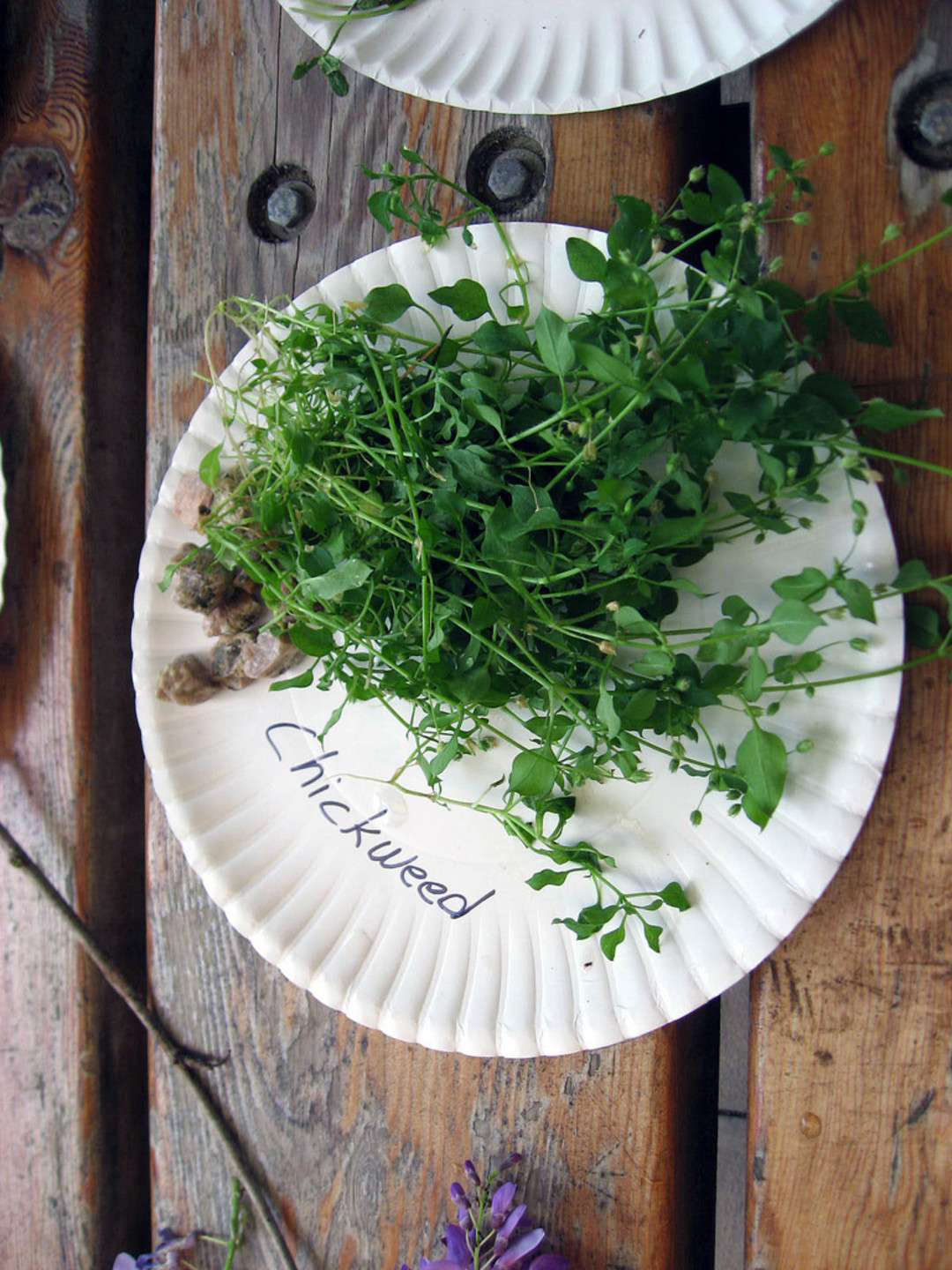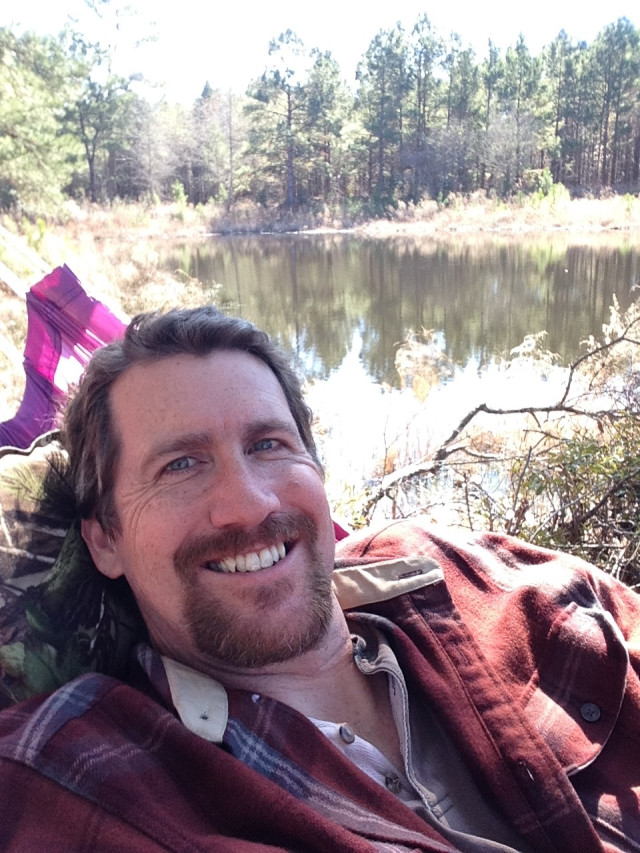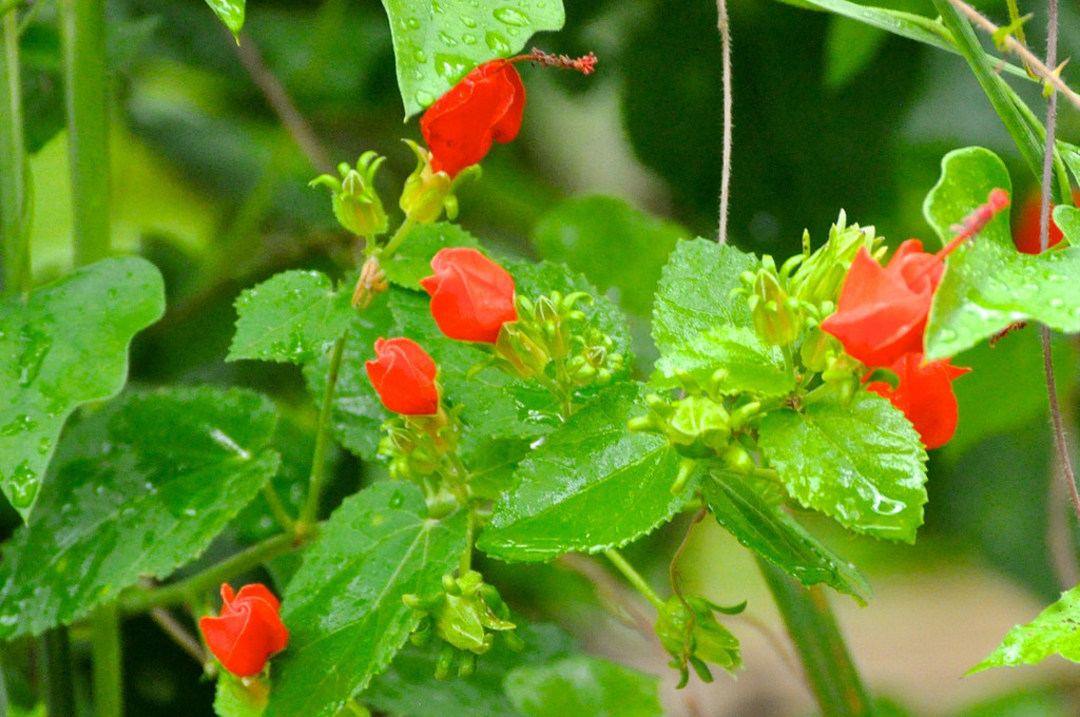Forest to Table: Harvesting Houston's Wild Edibles

A plate of wild chickweed harvested during one of Vorderbruggen's classes. | Photo via Flicker user FriedSpam
Mark Vorderbruggen lives in a different Houston than the rest of us. Where we see an urban jungle, Mark sees a jungle of a decidedly different sort, overflowing with good things to eat. That spiky bush growing in front of your window to keep burglars out? That might be pyracantha, or firethorn, which has edible berries. The weeds sprouting up all over your lawn? Perhaps chickweed and henbit, delicious cooked or used raw in salads. Even that lovely red flower, the one that looks like hibiscus. It could be Turk’s cap; you can eat the leaves, fruit, and flowers. The latter brew up into a drink very similar to the jamaica agua fresca you might enjoy with a plate of tacos at your neighborhood taqueria.
Vorderbruggen, a research chemist whose work focuses on oil industry solutions based on “green” chemistry of natural products, and who also goes by the moniker Merriwether the Adventurer, has been foraging for these and a host of other wild foods since his childhood in Minnesota. “I grew up in a foraging family,” says Vorderbruggen. “Both my parents were children of the Great Depression up in central Minnesota and one of the ways many families got through that terrible time was by harvesting the wild foods and medicines around them. Both my parents have a deep love of wild places and so growing up they continued to forage with me and my brothers beside them.”
That love of wild places has stayed with Vordebruggen, who teaches a monthly class on foraging at the Houston Arboretum and runs a website dedicated to wild edibles.

Mark Vorderbruggen, a.k.a. Merriwether the Adventurer, teaches classes on harvesting wild edibles in Houston.
Over the years, Vorderbruggen has supplied as much as 10 percent of his family’s food through foraging. These days, he’s busy enough with his educational outreach efforts that the wild contributions to his pantry have waned, but he still sees the importance of making routine treks into the wilds of Houston. “For me, it’s the thrill of the hunt. There’s a big part of that,” he says, describing how foraging has changed the way he views the world around him. “It drives my wife nuts. You know, we’ll be driving down I-45 or 290 at 70-some miles per hour, and I’ll catch a glimpse of a plant in a ditch or something, like ‘oh wow! It’s turkey’s foot!’ or something like that. It’s just I get this thrill that I can see it. I’m so ingrained in just constantly scanning my environment for edible and medicinal plants; I don’t think I could stop.”
Of course, you don’t have to go tramping through the woods or careening off the freeway to find wild edibles. With its diverse array of borders—“where field meets water, where water meets woods, where yard meets flowerbed”—the human landscape of a city offers a significant degree of plant diversity, including a host of edible plants.
This notion, that food is all around us, is one of the key ideas Vorderbruggen wants people to take away from his lessons—all in the hopes that we will see food differently and change our approach to what we eat as well as where and how we get it.
“I spent two months in China. One of the fascinating things there, all the landscaping is edible plants. Every little bit of green space, they’re growing cabbage or turnips or something. In fact, in a lot of cities, up to 90 percent of the food consumed by the city is grown right there in the city, mainly because they don’t have a lot of land that can be used for farmland,” says Vorderbruggen, a hint of admiration in his voice.

Turk's cap is more than just a pretty plant—it's entirely edible, too. | Photo via Flicker user Paul Cooper
Taking this concept to heart, Vorderbruggen has converted his own green spaces into what he calls a “permaculture food forest.” Talking through a virtual tour of his yard, he rattles off a couple dozen varieties of edible plants: “Starting with pine, we have two loblolly pine trees; from that we get pine needle tea, and also pine nuts, although the pine nuts take a lot of work. There’s some pyracantha, the firethorn, some purple sage, the purple sage of Texas, that makes a lovely sage flavored tea. I have some elderberry growing, and along with the elderberry, there’s a particular mushroom called the woodear, which grows predominately on dead elderberry, and so I get that. That’s the one usually in hot and sour soup. Then, going through the gate into the backyard, I have canna lily, two fig trees, two Republic of Texas orange trees. I have two satsuma, two yaupon holly [which makes a delightful—and caffeinated!—tea], two kumquat trees. Wild onion, wild violet, greenbriar, sow thistle, dandelion, scarlet pimpernel, pony foot, dollar weed, wild carrot, passion vine, ground nut, curled dock…” Vorderbruggen continues for some time, spinning a list of food to make the Whole Foods produce section green with envy. He even has a “toothache” tree, the seeds of which provide the tingly signature flavor of Sichuan food. “What’s great about it” he says with an audible grin, “is that probably half has been delivered by birds.”
“I keep thinking, if everyone got 10 percent of their food from their backyard, how much less farmland would we need?” For Vorderbruggen, less farmland means more wild spaces, which means more opportunities for us and our children to experience nature. “That’s part of my big push,” he says.
“We’re like on the third generation now of kids who don’t get to play in the woods, because their parents didn’t get to play in the woods, and now parents are terrified of the wild, that every plant is poisonous and every animal is out to kill them,” says Vorderbruggen, who has two kids himself and has done educational outreach with scout troops and home schooling associations. “So the kids don’t get out in nature, they don’t have exposure to nature. We’re asking them to love the earth, protect the earth and all this, and they’re quite happy on the couch playing video games, and they don’t have a connection to the thing we’re asking them to save. They’re not interested in it. By taking them out and showing them the food, they’re all thrilled, like ‘wow, I can actually eat this?!’ It helps them commune with nature, and it opens up a world to them that they didn’t realize.”
The best part? That world starts in your very own front yard.




